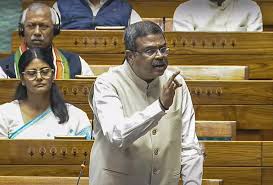Listen To This Post
New Delhi: The Government of India has approved a landmark reform in the Goods and Services Tax (GST) framework by rationalizing the existing structure of five tax slabs into just two — 5% and 18% — with effect from September 22. This move is being hailed as one of the biggest indirect tax reforms since the introduction of GST in July 2017.
A big reform in GST Complexity
When GST was launched in 2017 as a “one nation, one tax” regime, it subsumed a wide range of indirect taxes like excise duty, service tax, VAT, and octroi. However, in an attempt to balance revenue needs and shield consumers from inflation, GST was structured with multiple slabs: 0% (exempt), 5%, 12%, 18%, and 28%, apart from special rates for luxury and sin goods.
While the multi-slab system was meant to provide flexibility, over time it led to classification disputes, litigation, and compliance burdens. Businesses often struggled with determining the correct slab for products and services, leading to ambiguity and litigation. Policymakers, economists, and industry bodies have long argued that a simplified structure with fewer slabs would make GST more transparent, business-friendly, and globally competitive.
What the New Reform Means
From September 22, the five-slab GST system will be merged into just two slabs:
-
5% for essential goods and services, ensuring affordability for the common man.
-
18% for most other goods and services, creating a broad standard rate.
The 28% slab, which was earlier applicable to luxury cars, tobacco, aerated drinks, and sin goods, will reportedly be retained as a special “sin tax” category, but outside the general slab framework. Exemptions for items like fresh food and healthcare will continue.
Implications and Impact on Business
-
Simplification of Compliance
-
Fewer slabs mean reduced classification disputes. Businesses will save time and resources that were earlier spent on interpreting rate applicability.
-
Simplified invoicing and accounting systems, particularly benefiting SMEs and startups.
-
-
Impact on Prices
-
Goods and services previously taxed at 12% may now fall under 18%, potentially making some products costlier.
-
Conversely, items earlier taxed at 28% (and shifted to 18%) will see price reductions, benefiting sectors like consumer durables and automobiles.
-
Overall, the move could result in short-term inflationary pressures, but long-term price stability.
-
-
Revenue Neutrality vs. Fiscal Balance
-
The government’s challenge will be to maintain revenue neutrality.
-
While some items may yield lower tax collections, broader tax coverage and reduced evasion due to simplification may offset the loss.
-
-
Boost to Ease of Doing Business
-
India has often faced criticism for a complex tax system despite the GST reform. A simplified two-slab structure brings India closer to global practices, where most countries operate with one or two GST/VAT rates.
-
This is expected to boost investor confidence and improve India’s rankings in global ease of doing business indices.
-
-
Sector-Wise Impact
-
FMCG & Essentials: Minimal change as most essentials stay at 5%.
-
Consumer Durables & Automobiles: Likely beneficiaries if they shift from 28% to 18%. This could spur demand and boost manufacturing.
-
Services Sector: Uniform 18% may increase costs for some service categories but brings clarity.
-
Hospitality & Tourism: Hotels earlier taxed at 12% may now move to 18%, raising costs for consumers.
-
-
Impact on Consumers
-
Consumers will enjoy greater clarity on pricing, as fewer slabs mean less confusion.
-
Over time, the efficiency gains for businesses may translate into competitive pricing and better product availability.
-
Broader Economic Impact
-
Formalization of Economy: Simplification encourages compliance and discourages under-reporting of sales.
-
Investment Growth: Predictable tax structures attract foreign investors, particularly in sectors like retail, e-commerce, and manufacturing.
-
Political Significance: Coming ahead of festive season and possibly elections, the reform has both economic and political dimensions. It signals government intent on making GST pro-business and pro-consumer.
The reduction of GST slabs from five to two marks a watershed moment in India’s tax reforms. While some sectors and consumers may feel short-term pain due to realignments in tax rates, the long-term benefits in terms of simplification, compliance, ease of doing business, and global competitiveness are significant. This step can be seen as a leap towards the original vision of GST: a unified, transparent, and growth-oriented indirect tax system.














